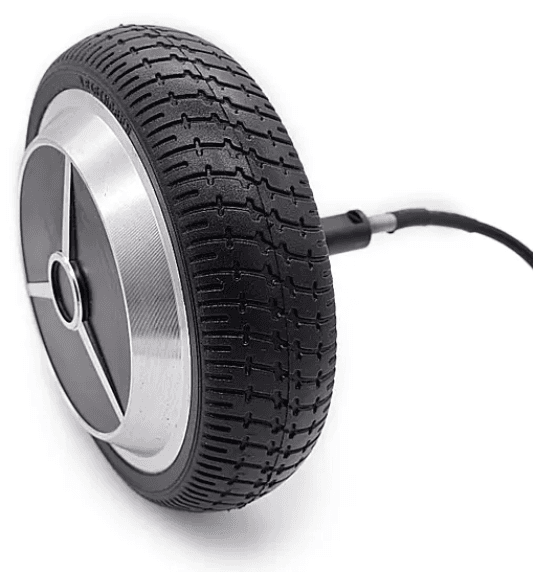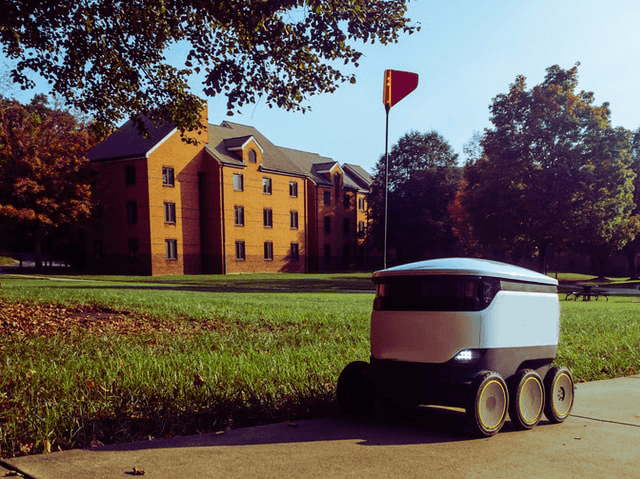Powering Ahead: A Comprehensive Look at How Motorized Traction Wheels Work

Powering Ahead: A Comprehensive Look at How Motorized Traction Wheels Work
Electric motors have revolutionized the way we think about transportation, powering everything from electric scooters to autonomous guided vehicles. Two types of electric motors that are commonly used in these smaller electric vehicles are in-wheel hub motors and servo-wheel motors. Below we will explore the differences between these two types of motors in terms of construction, applications, and advantages.
Construction of Motorized Traction Wheels
An in-wheel hub motor is a type of electric motor that is located inside the wheel hub of a vehicle. It consists of a rotor, stator, and outer casing, which is connected directly to the wheel. The stator is fixed, and the rotor rotates around it, generating torque that propels the wheel forward.


On the other hand, a servo wheel motor has a more complex construction, consisting of a servo motor, a traction wheel, and sometimes a gearbox. For lightweight applications, the traction wheel can be mounted directly to the shaft of the servo motor. More demanding applications with high payloads will require a gearbox that increases torque.
Working Principle of Motorized Traction Wheels
The working principle of an in-wheel hub motor is straightforward. It uses the magnetic field created by the stator to rotate the rotor, which is directly connected to the wheel. The direction of rotation depends on the polarity of the current in the stator coils.
A servo-wheel motor, on the other hand, uses closed-loop control to achieve precise speed and position control. It uses feedback from the encoder to adjust the current in the stator coils, ensuring that the rotor moves to the desired position and maintains the required speed.
Advantages of Motorized Traction Wheels
In-wheel hub motors offer several advantages over servo-wheel motors. They are simple in construction, with fewer moving parts, which makes them more reliable and easier to maintain. Additionally, in-wheel hub motors offer a more compact design, allowing for more space in the vehicle's body for other components.
In contrast, servo-wheel motors offer superior speed and position control, making them ideal for applications that require high precision and accuracy. They also have a higher torque-to-inertia ratio, which means they can achieve higher speeds and acceleration rates.
Motorized Traction Wheel Applications
In-wheel hub motors are commonly used in electric bicycles, electric scooters, and other electrically assisted applications like baby strollers. They offer several advantages, such as a lower price, simple construction, and a more compact design. They also eliminate the need for a transmission system and reduce the number of moving parts, making them more reliable and easier to maintain.
On the other hand, servo-wheel motors are widely used in robotics and industrial automation like AGV, AMR, and more. They are preferred as they have high precision and accuracy, such as in industrial machinery and medical equipment.

In conclusion, in-wheel hub motors and servo-wheel motors are two different types of electric motors, each with its unique features and benefits. In-wheel hub motors offer a lower price, simple construction, and a more compact design. Servo-wheel motors, on the other hand, offer superior speed, position control, and are preferred for applications that require high precision and accuracy. Ultimately, the choice between an in-wheel hub motor and a servo-wheel motor depends on the specific application's requirements and the desired performance characteristics.
News
Continue Reading

Revolutionizing the Food and Beverage Industry: Exploring New Robots in Food Preparation, Serving, and Delivery
Robotic advancements are dramatically reshaping the landscape of the food and beverage sector. This article delves into the transformative impact of robots on aspects of the industry, including food preparation, service, and delivery logistics.
